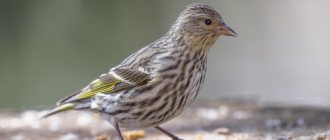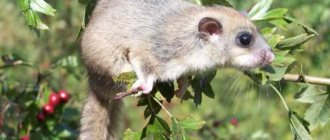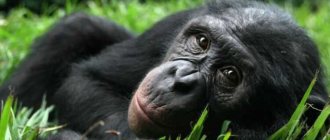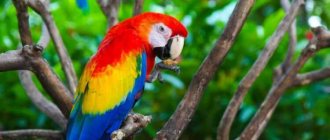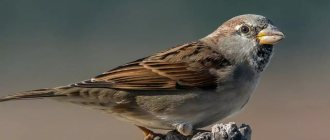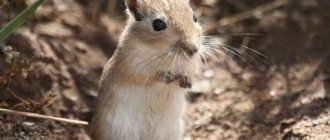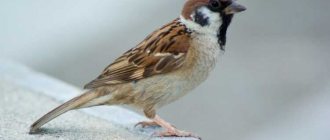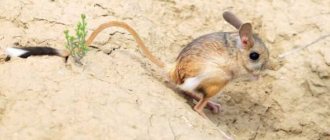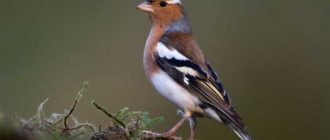The Galapagos Islands are famous for more than just elephant turtles or sea lions. One of the symbols of the Galapagos Islands is the marine iguana. This endemic species is the only one in the world capable of spending a large amount of time at sea. Marine iguanas are found only in the Galapagos.
According to scientists' research, this species separated from land relatives from 4 to 10 million years ago. They ended up on the islands completely by accident and found themselves cut off from the outside world. There was no vegetation on the islands at that time, so the animals had to learn to drink sea water and dive into the ocean for food.
What does a marine iguana look like?
The Galapagos Islands amaze travelers with a bizarre combination of lacy foamy surf, white sands and black heaps of basalt. And among this unusual natural beauty lives a unique creature that is not found anywhere else in the world. This is a special type of lizard - marine iguanas. This is a solid animal with large strong paws, long formidable claws and a sharp horny crest. A sort of miniature prehistoric dinosaur, accidentally preserved to this day. The body of the reptile is covered with a dense scaly layer. The wide head is decorated with a protective spiked helmet.
Marine iguanas are armored up to the tip of their long tail. The tail scales are larger and quadrangular in shape. It is laid out in transverse rows, but does not prevent the animal from moving its tail while swimming. The tail itself is flattened laterally. A large marine iguana, measuring about one and a half meters in length, spends a lot of time in the sea. An adult lizard weighs 10-12 kg.
The ridge on the back of the animal looks very menacing. The skin scales on it are triangular, slightly elongated in shape. The legs, although they look very powerful, are quite short. The fingers are equipped with membranes that help in swimming. Marine iguanas are colored brown, greenish-gray or brown.
PTICHKA.NET – Pets
The marine iguana (lat. Amblyrhynchus cristatus) is an iguana that lives exclusively in the Galapagos Islands. Unique among modern lizards, it has the ability to spend most of its time at sea. Has 7 subspecies.
Habitat: Marine iguanas live only on the Galapagos Islands off the coast of South America. They inhabit mainly rocky shores, salt marshes and mangroves.
The total length reaches 140 cm, of which more than half is occupied by the tail. The skin color is brown, olive-gray, sometimes almost black, with continuously large blurry spots. The head is short and wide, covered with polygonal scales. The largest scales are located on the forehead in the form of cone-shaped horny tubercles directed forward. Along the back to the tip of the tail there is a low crest, which is laterally compressed and consists of elongated triangular scales. The limbs are well developed and strong. Fingers are short. with large curved claws, have a swimming membrane. The tail is flattened laterally, oar-shaped, covered with small ribbed scales. The tail also has large quadrangular scales, which are arranged in regular transverse rows.
The marine iguana is the only marine lizard in the world with a gray to black pyramidal dorsal crest.
Sexual differences: the average length of a male is about 1.3-1.40 m, females are about 0.6 m in length.
The marine iguana spends a lot of time in the water. The young never swim far from the shore. And among adult marine iguanas, the most fearless behavior is demonstrated by males, who are able to swim long distances, but not more than a few hundred meters. Lizards spend about an hour under water, holding their breath for this period.
There are quite a lot of cold underwater currents around the Galapagos coast, so after swimming, marine iguanas have to warm up. Under water, their body temperature drops by 30 degrees, and lizards have no subcutaneous fat, so on the surface they often sunbathe, thereby normalizing heat exchange. In the water, marine iguanas are extremely agile and fast. When swimming, they seem to wriggle their whole body and tail. The lizard's endurance is also enhanced by its ability to slow down its heart rate under water and allow blood to flow only to vital organs. Coming ashore, marine iguanas cling tightly to rocks with powerful claws, absorbing the sun's heat thanks to their almost black color. But lizards never move more than a few meters away from water.
The greatest depth to which a marine iguana can dive is 12 meters, but more often lizards dive to 1.5-5 meters, holding themselves at the bottom with the help of their claws. On the shore, marine iguanas stay in whole flocks in groups of 5-10 females with young animals quite close to each other.
Diet: Despite their rather frightening appearance, marine iguanas have nothing in common with predators, being herbivorous reptiles. Their main food is seaweed, which the lizards bite from stones with long, three-pointed teeth. And only sometimes do lizards allow themselves to feast on a red crab or other small sea creature, and even then this is more typical of young marine iguanas.
Along with seaweed, the lizards also get a lot of salt into their bodies, so after eating they often use their salt-removing mechanism - they sneeze on the shore. Marine iguanas can dive quite deep for food. The scope of information about the nutrition of sea lizards has not been thoroughly studied.
Marine iguanas have virtually no subcutaneous fat, which allows many species of animals to survive in unfavorable conditions. However, they managed to invent their own way to wait out the hungry period: the growth of these reptiles not only stops, but goes towards “shrinkage”.
Underwater reptiles are able to reduce their body length by as much as 20% and maintain it for two years, because the loss of just a centimeter increases the chances of survival by as much as 10%. This is especially noticeable in large individuals. When there is enough food, they return to their previous size.
Reproduction: During the mating season, red spots appear on the male. Lizards obtain pigments for this from food. Marine iguanas are characterized by large family groups, the representatives of which try not to enter someone else’s territory, being actively driven out by its “owners.” The head of each such family is a large and strong male. Several females and grown offspring live next to him. Sometimes young males try to challenge the old males for the right to own a “harem” by starting fights. Opponents fight, butting heads. But such clashes are far from harmless.
After mating, the female lays a clutch. The female lays her eggs in a hole in sand or volcanic ash at least 300 m from the shore, guards the clutch for several days, and then abandons it. The incubation period is about 95 days. Clutches occur no more than once a year and consist of a maximum of three, or even one egg. Often, a female who has found a suitable place has to actively drive away her rivals, including her neighbors in the “harem”. And the very arrangement of the laying site in female marine iguanas is characterized by activity. They scatter sand so much that they can bury a neighbor who happens to be nearby or accidentally destroy someone else's masonry. During the breeding season, female marine iguanas are particularly aggressive. The young hatch from the eggs after about 3-4 months and can remain close to their parents, expanding and replenishing their family group until they reach sexual maturity.
Synonyms: Marine iguana, Galapagos marine iguana, Crested iguana, Amblyrhynchus cristatus, Meeresechse, Marine iguana.
Scientific classification
Kingdom: Animals Type: Chordata Class: Reptiles Order: Squamate Family: Iguanaidae Genus: Marine iguanas (Amblyrhynchus) Species: Marine iguana
Subspecies:
- Amblyrhynchus cristatus albemarlensis
- Amblyrhynchus cristatus cristatus
- Amblyrhynchus cristatus hassi
- Amblyrhynchus cristatus mertensi
- Amblyrhynchus cristatus nanus
- Amblyrhynchus cristatus sielmanni
- Amblyrhynchus cristatus venustissimus
Lifestyle
Iguanas have keen eyesight and can swim and dive well. On land they have no enemies, so they allow themselves to be slow and lazy. But in the water you often have to escape from sharks, so slowness here can be disastrous. Therefore, the marine iguana adjusts its habits depending on the environment in which it is located.
Lizards' favorite pastime on land is basking in the sun. This is due to the peculiarities of the animal’s thermoregulation. The temperature of his body depends on the environment, and in order to receive enough energy for the normal process of life, it is necessary to accumulate heat and distribute it throughout the body. The marine iguana is not in danger of overheating. It releases excess heat through the skin of the belly.
Natural enemies
Despite their impressive size and sharp long claws, Galapagos marine iguanas have many enemies. Cats, rats, and wild pigs happily hunt young lizards. Dogs can also attack adults. Among the bird enemies were Galapagos buzzards, short-eared owls and the most common gulls. For some time it was believed that sharks also pose a danger to iguanas. But, as it turns out, local sharks do not consider lizards as food.
Family relationships
Darwin called marine iguanas the fiends of hell, the appearance of these lizards seemed so terrible to him. But in reality they are not too aggressive. To live, marine iguanas create family groups, which include one adult male and up to ten females. Juveniles stay separate, but also form groups. Sometimes several families unite into a large community.
Each male looks after his own territory. Outsiders are not allowed onto “family” lands. Seeing a stranger, the male warns about trespassing. He takes a stable position and begins to shake his head. If the intruder does not leave, a fight begins. Usually strangers enter occupied territory, having designs on the “master’s” harem, so serious battles take place.
Interesting facts about the animal
Marine iguanas have a third eye. It is a white scale that is located on the top of the head. If you consider the structure, you can find not only the lens, but also a full-fledged retina. This rudimentary organ was inherited by iguanas from their distant ancestors.
Juveniles often feed on small insects. But after growing up they become vegetarians.
When males dive into the sea, their temperature drops by 10 C0. The heart rate also slows down. If on the surface the frequency of contractions of the heart muscle is 100 beats per minute, then under water this figure decreases to 30.
Females move freely along the entire shore. If the male proposes to her, he nods his head and waits to see how the lady reacts. As soon as the female expresses her consent, he immediately climbs on her and holds her by the neck during sexual intercourse.
Behavior in water
Marine iguanas rarely swim far from the shore. In water they make wave-like horizontal movements. Animals dive not for pleasure, but for food or to escape sharks. Male iguanas are bolder and stronger, they can swim longer than females. Young animals always stay in shallow water.
What else can a marine iguana surprise? Scientists have collected interesting facts related to the blood circulation of these animals. In order not to frequently rise to the surface and not to expend excess energy, the reptile saves oxygen while in water. Blood circulation slows down, only vital organs are supplied with blood. Thus, the lizard can survive under water for more than 1 hour.
Galapagos iguana in the Red Book
The marine iguana is listed in the Red Book as a species that is in a vulnerable state.
Main causes of extinction
The main danger is posed by feral dogs, pigs and cats, which were brought by seafarers.
Current population situation
Currently, the population of Galapagos iguanas averages 200-300 thousand. For this reason, they are listed in the Red Book as a species that is in a vulnerable position.
Do you need to take protective measures?
On the island of Santiago, the animal population has completely disappeared. The reason for this phenomenon was the presence of feral pigs. To restore numbers, the authorities eliminated the pig population.
Today, the number of marine iguanas that live on North Seymour Island has reached five thousand individuals. Some of these animals were relocated to Santiago Island.
Reproduction
Mating games are not the favorite pastime of the male iguana. He experiences attraction to his harem only once a year. During this period, the male’s scales become brighter, brown and reddish spots appear on it, which attract active females.
The fertilized female lays several eggs in the hole. Her clutch is small - 2-3 pieces. The female sprinkles warm sand on top of her treasure. Fights often occur around the laying sites, since there are few sandy areas on the Galapagos Islands; the islands are mainly composed of volcanic rock. Sometimes females destroy the clutches of their rivals, making room for their offspring.
In warm sand, the eggs mature for about four months. Then the young appear and join the parent group. The diet of young animals contains not only plant, but also animal food. Babies need this to grow.
Marine iguanas can hardly be called caring parents. They do not protect their offspring from predators. So most of the young become prey for seagulls, snakes or dogs and cats. People are trying to exterminate stray dogs in order to preserve the population of marine iguanas, but this does not help much. Unfortunately, these animals are today classified as vulnerable species.
Notes and links
- ↑ and (c) Link Reptarium Reptile Database
:
Amblyrhynchus cristatus - The Beagle Diary of Charles Darwin
, via Charles Darwin,
Cambridge University Press
, 2001 Edition, (ISBN 0521003172) - (from) Lücker and Feiler, Beobachtungen einer Paarung zwischen Meerechsen-Männchen (Amblyrhynchus cristatus) and Landleguan-Weibchen (Conolophus subcristatus) on Plaza Sur / Galapagos-Inseln sowie Beobachtungen an einem admultten Gattungshybridenus Amblhoden (Amblyrhynchus cr istatus)
["Observations of mating of a male marine iguana with a female land iguana on South Plaza Island / Galapagos Islands, as well as an adult hybrid”], Elafe, 2002, flight. 10, paragraph 4, paragraphs 49-54. - ~ rhrsbi or GalapagosPages or GalapagosPages MarineIguana.html
- Wikelski and Tom, 2000: Marine iguanas shrink to survive El Niño
Nature, flight. 403, paragraph 37-38 (nature DOI: 10.1038 / 47396. - Wikelski, 2005: Evolution of body size in Galapagos marine iguanas.
Proceedings of the Royal Society of Biological Sciences, flight. 272, paragraph 1576, pp. 1985-1993. - (c) Trillmich & Trillmich, 1986: Foraging strategies of the marine iguana, Amblyrhynchus cristatus
. Behavioral ecology and sociobiology, flight. 18, pp. 259-266. - ↑ vs. Miralles, Macleod, Rodríguez, Ibáñez, Jiménez-Uzcategui, Quezada, Vences & Steinfartz (2017): Shedding light on the demons of darkness: a comprehensive taxonomic revision of the Galapagos marine iguanas (genus Amblyrhynchus
). Zoological Journal of the Linnean Society, 2022 (XX) 1–33. [1]
A few words about adaptability to life
Constant contact with salt water while swimming or eating caused the sea lizard to develop special glands that relieve it of excess salt. These salt glands are connected to the lizard's nostrils.
Salt flies out when you sneeze. If nature had not taken care of creating these glands, the lifespan of lizards would have been significantly shorter, since their kidneys would not have been able to cope with excess salt. However, due to the fact that the species' habitat is limited only to the Galapagos, it is not very well studied. There is no exact information about the lifespan of these lizards.
List of subspecies
As is often the case in archipelagos, the subspecies characteristic of an island or group of islands are the result of interbreeding between subpopulations isolated on those islands due to their small numbers or absence.
- A. s.
Cristat Bell, 1825 (Fernandina Island and Isabela Island) - A. s.
Godzilla Miralles, McLeod, Rodriguez, Ibañez, Jimenez-Uzcategui, Quesada, Vences & Steinfartz, 2022 (Northeast San Cristobal Island)[8] - A. s.
khasi Eibl-Eibesfeldt, 1962 (Santa Cruz Island) - A. s.
hayampi Miralles, McLeod, Rodriguez, Ibañez, Jimenez-Uzcategui, Quesada, Vences & Steinfartz, 2022 (Marchena Island)[8] - A. s.
Jeffrey Miralles, McLeod, Rodriguez, Ibanez, Jimenez-Uzcategui, Quesada, Vences & Steinfartz, 2022 (Wolf Island and Darwin Island)[8] - A. s.
Mertensi Eibl-Eibesfeldt, 1962 (Southwest San Cristobal Island) - A. s.
Nanus Garman, 1892 (Genovesa Island) - A. s.
Sielmanni Eibl-Eibesfeldt, 1962 (Pinta Island) - A. s.
trillmichi Miralles, McLeod, Rodriguez, Ibañez, Jimenez-Uzcategui, Quesada, Vences & Steinfartz, 2022 (Santa Fe Island)[8] - A. s.
Venustissimus Eibl-Eibesfeldt, 1956 (Hispaniola Island) - A. s.
Vikelsky Miralles, McLeod, Rodriguez, Ibañez, Jimenez-Uzcategui, Quesada, Vences & Steinfartz, 2022 (Santiago Island)[8]
A. s. albemarlensis
recognized in 2022 as a synonym of
A. s.
cristate [8].
Original publications
- Bell, 1825: We have a new genus of iguanids.
Zoological Journal, London, flight. 2, pp. 204-207 (Full text). - Eibl-Eibesfeldt, 1956: Eine neue Rasse der Meerechse, Amblyrhynchus cristatus venustissimus, nebst einigen Bemerkungen über Amblyrhynchus cristatus cristatus.
Senckenbergiana biologica, flight. 37, paragraph 87-100. - Eibl-Eibesfeldt 1962: Neue Unterarten der Meerechse Amblyrhynchus cristatus, nebst weiteren Angaben zur Biologie der Art.
Senckenbergiana biologica, flight. 43, neto 3, pp. 177-199. - Garman, 1892: Reptiles of the Galapagos Islands.
Essex Institute Bulletin, flight. 24, pp. 73-87 (Full text).
